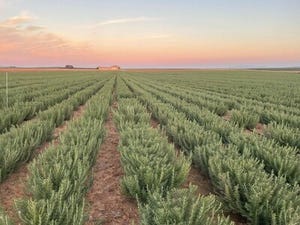Feed, other factors drive feed efficiency
Feed efficiency is multi-factorial outcome very much influenced by pig's diet and barn management.

Like so many things in pork production, feed efficiency is a multi-factorial outcome that's very much influenced by the pig’s diet and barn management. It is particularly critical given that feed represents between 55% and 65% of the total cost of production in modern systems.
At the American Association of Swine Veterinarians (AASV) meeting in New Orleans, La., Dr. John Patience of Iowa State University discussed various dietary and barn management factors and provided a checklist on improving feed efficiency at a practical level.
In doing so, Patience explained that due to its close association with feed costs, feed efficiency strongly influences financial returns. Actions taken to improve feed efficiency can, at times, inadvertently lead to financial losses rather than gains, he noted.
The fact is that single-minded actions taken to improve feed efficiency may affect other aspects of the enterprise, not the least of which is the cost of feed, Patience said.
Among his checklist items, and in an attempt to represent feed efficiency in financial terms, Patience noted the importance of:
1) Reduced feed wastage – A two percentage point reduction in feed wastage is worth about $1.44 per pig.
2) Reduced pig mortality – A one percentage improvement in growout mortality improves feed efficiency by about one point.
3) Ensuring that pigs start each fill with the correct diet – Feeding a leftover finishing diet from the previous fill is not acceptable.
4) Increased dietary energy concentration – It works almost every time, but it can increase feed cost per pound of gain.
5) Reduced particle size – Every 100 microns results in an improvement of about four points, which is about $1.20 per pig.
6) Pelleting – This improves feed conversion by about 5%, or approximately $3.90 per pig.
7) Proper feeding levels – Restriction is not recommended due to the impact on growth rate.
8) Optimized barn temperature; lower critical temperature – For 50 lb. pigs, it is approximately 75 degrees F, and for pigs over 150 lb., it is approximately 60 degrees F.
9) Optimized barn temperature; maximum desirable temperature – For 50 lb. pigs, it is approximately 90 degrees F, and for pigs at 200 lb., it is approximately 81 degrees F.
10) Euthanization in a timely manner.
11) Selection genotypes that offer feed conversion value while maintaining growth rate, carcass and meat quality.
12) Herd health – The biggest impact of porcine reproductive and respiratory syndrome occurs in the first four weeks after infection (single infection situation).
13) Improved sow productivity with higher average parity.
For more information on this topic, visit: www.swinefeedefficiency.com
About the Author(s)
You May Also Like



